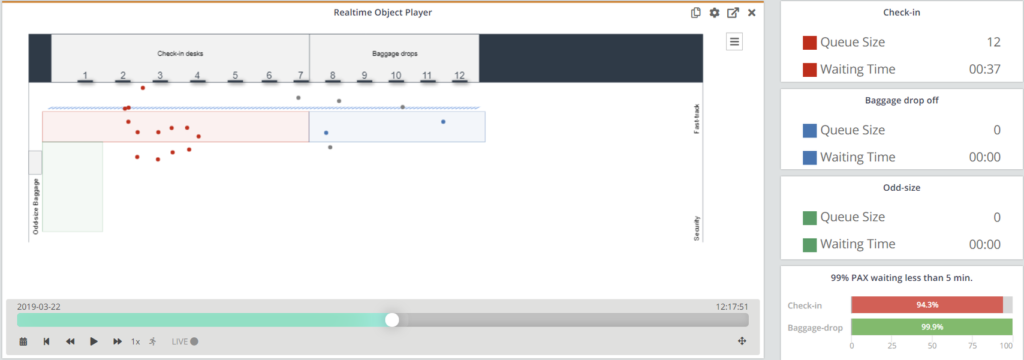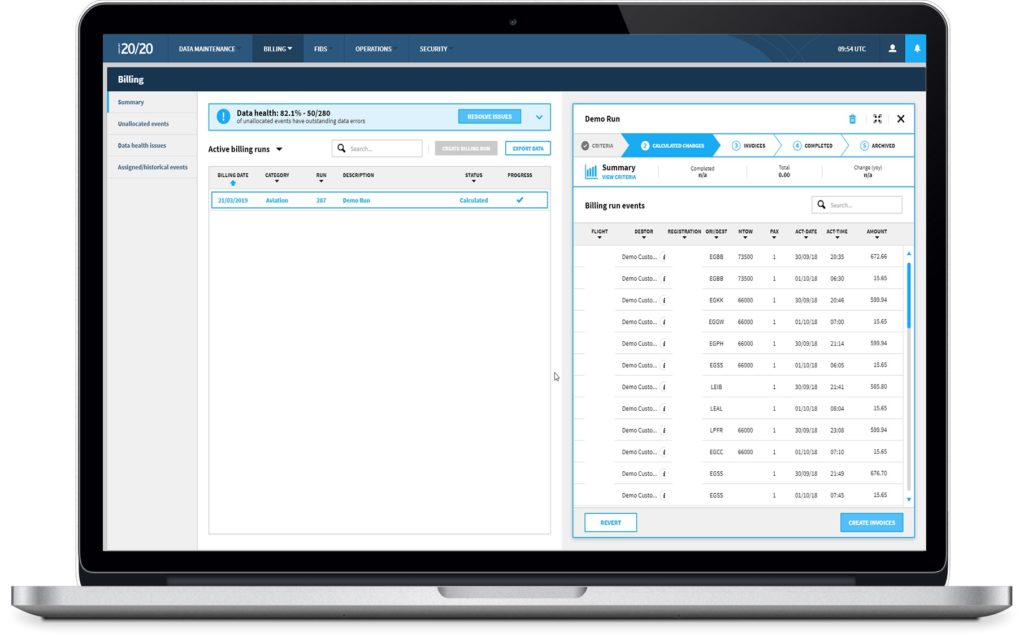Veovo is unveiling two new products at Passenger Terminal Expo 2019. The first is the R8 Revenue Management System, which helps airports manage and get intelligence out of their finances. The other is a new 3D camera technology for the company’s BlipVision people flow platform.
The R8 system collects both aero and non-aero revenue information in one place to help financial managers keep on top of the different revenue streams and find ways to maximise them.
It does this by tying into the AODB, as well as third-party applications, to create a ‘data warehouse’ over the top of the airport’s other systems, and additionally provides some tools to analyse the data.
VP of Veovo Chris Warrington explained, “What we do is pre-package a series of queries and questions that we believe airports will want to ask of the data, and then make recommendations based on the answers. The system is partly about serving up the data in a meaningful way, and partly about trying to extrapolate what the airport is likely to want to do about it.
“At the moment, the system is doing just the first part of that. For the second part, we are using machine learning and artificial intelligence to make recommendations and we have a number of prototypes we are working on at the moment.”
The system also uses end-to-end automated processing to ensure bill-ready aero transactions and intelligent exception handling to reduce the time it takes to generate invoices.
The revenue system ties in with Veovo’s AODB and revenue generation server, as well as its Blip system, a flow management and people tracking technology of which Veovo is presenting the latest version at this year’s expo. “There is an assumption that the more time people spend airside, the more money they will spend – which isn’t strictly true. There is also an assumption that the faster they can get through security, the more satisfied they will be at the other end and, again, the more money they will spend.
“What we are trying to do is connect the three dots. If we know how much time they spend in the queue, we know – broadly speaking – how much time they spend in the concession stands and the food and beverage outlets, and so we can correlate the delay in security with a cost in dollars and we can try and monetise that. It’s not a direct correlation at the moment, but we are putting the pieces together.
“The whole intention of the data warehouse is to use not just our data, but to also use third-party systems and other integrated systems so that the airport can extract truly usable data from that.”
 Getting information on how much time passengers spend in the different parts of the airport is what the BlipVision technology is for. The new 3D camera technology uses deep-learning algorithms to enable individualised, fully anonymous movement patterns and insight into flows. BlipVision protects individuals’ identity by only reporting a numerical ID and people’s positions to the system.
Getting information on how much time passengers spend in the different parts of the airport is what the BlipVision technology is for. The new 3D camera technology uses deep-learning algorithms to enable individualised, fully anonymous movement patterns and insight into flows. BlipVision protects individuals’ identity by only reporting a numerical ID and people’s positions to the system.
This way, it can detect, measure and predict queues, visualising them in a web-based user interface. It can then also provide information about the use of assets like counters and security lanes, thanks to integration with Veovo’s AODB and FIDS solutions.

